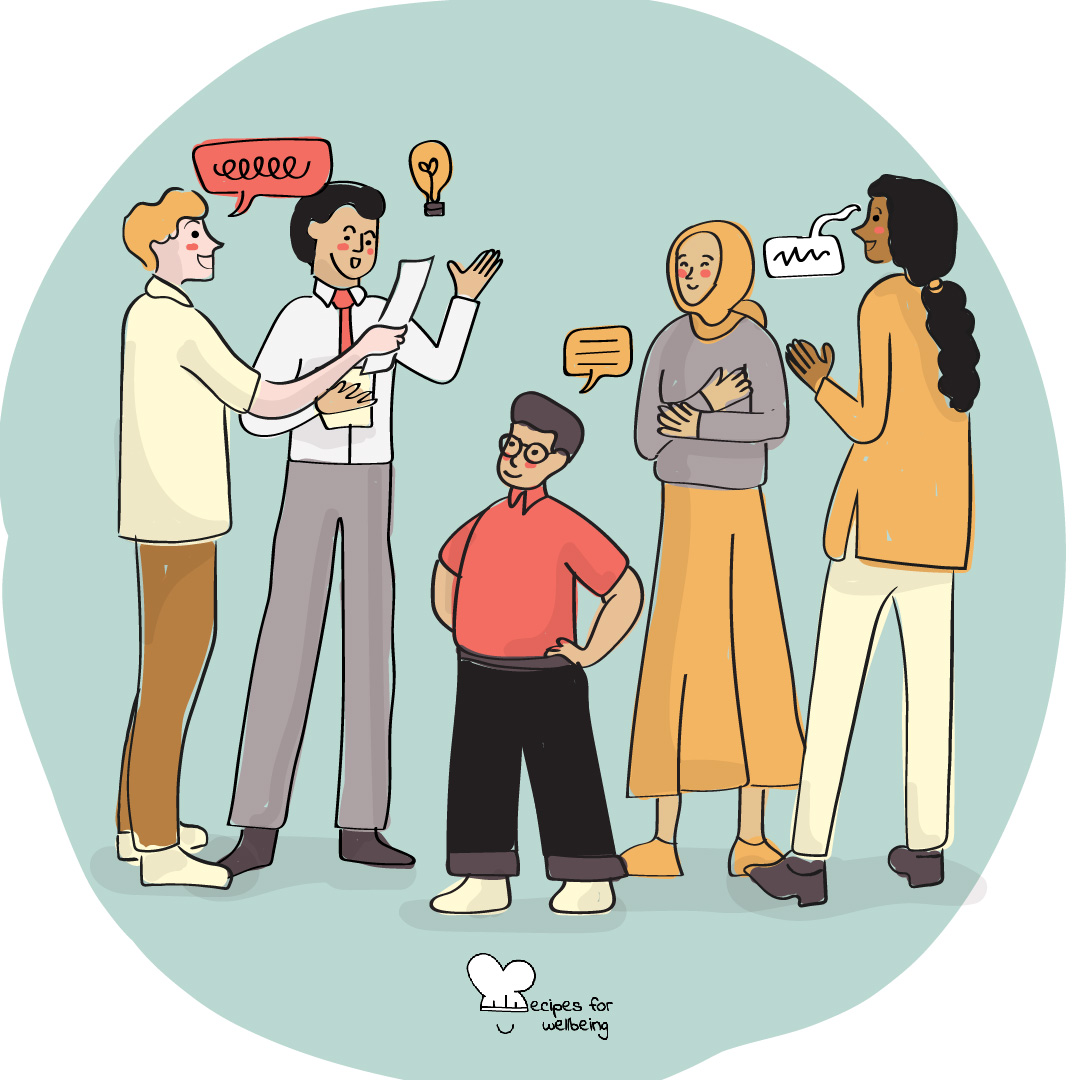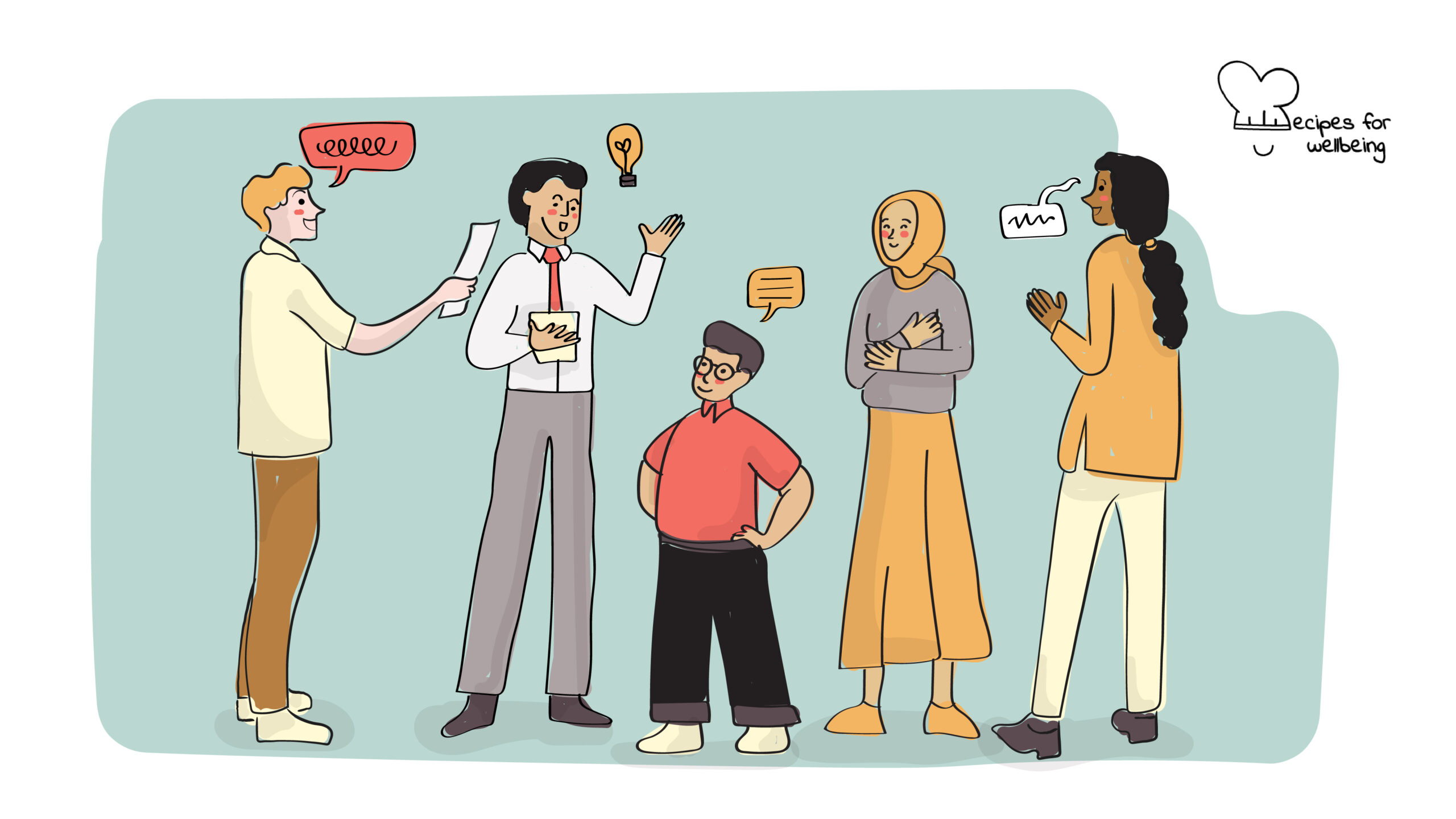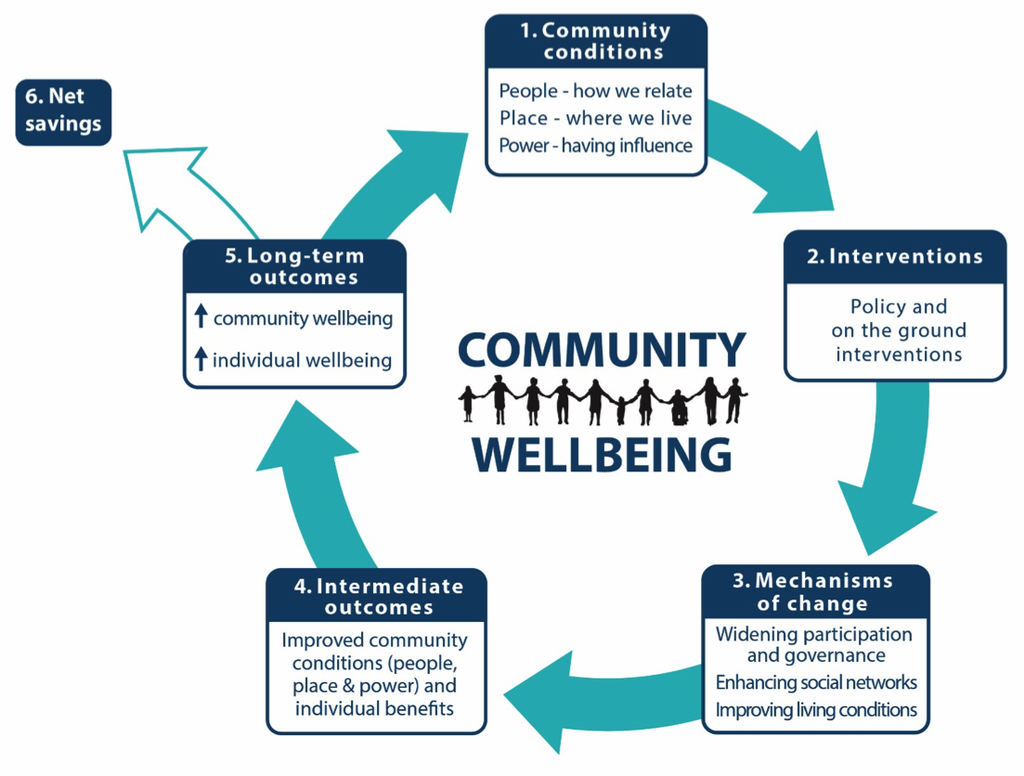
Theory of Change for wellbeing
If there is no wind, row. ―Latin Proverb
👥 Serves: 11-25 people, 2-10 people, 26-40 people, 41+ people
🎚 Difficulty: Medium
⏳ Total time: Half a day
🥣 Ingredients: Pens, papers, teamwork, willingness, creativity
🤓 Wholebeing Domains: Accomplishments, Community
💪 Wholebeing Skills: Belonging, Community-building, Discernment, Flourishing, Legacy, Non-extracting, Reciprocity

Theory of Change for wellbeing
📝 Description
Develop a Theory of Change that improves community wellbeing.
The National Institute for Health and Care Excellence defines community as “a group of people who have common characteristics or interests. Communities can be defined by geographical location, race, ethnicity, age, occupation, a shared interest, or affinity (such as religion and faith) or other common bonds, such as health need or disadvantage.”
How does your organisation define community? Does your organisation serve multiple communities? How does being in a community feel? What could make your community grow?Whatever your organisation lands on as a definition for your community, there are so many entities and intricacies that work in tandem towards the wellbeing of the group and its individual members. What everyone wants out of a community, such as trust, collaboration, innovation, safety, strong bonds, takes work.
Developing a Theory of Change for your organisation helps you map out different pathways to achieve your desired impact and move towards your vision. This recipe in particular guides you through a process to take into consideration the wellbeing of your community (or communities) in your organisation’s Theory of Change. Please note that this activity can be done within your organisation but it must include dialogue with its respective communities.
This recipe has been inspired by the work of What Works Centre for Wellbeing and their innovative Theory of Change, and adapted by our wellbeing content writer collaborator Marissa Del Mistro.
👣 Steps
Step 1 – Get inspired (1 hour)
Check out What Works Centre for Wellbeing’s Theory of Change before developing your own. Their theory involves 6 cyclical processes that, when working together, aim to improve individual and community wellbeing.
In the photo above you can see their six stages that impact wellbeing, starting with:
- Community conditions: Relations to other people, community connection, and the amount of impact we hold.
- Intervention: Creating tangible initiatives.
- Mechanism of change: Putting those initiatives into place.
- Intermediate outcomes: Reap the benefits of step 3.
- Long-term outcomes: The reason behind it all – the long-term outcomes that make all the changes and collaboration worthwhile!
- Net savings: Feeding back, making any necessary adjustments and realising what may need little tweaks as people experience benefits and feel more connected.
Creating a Theory of Change requires significant collaboration, patience, and openness, but it is very exciting to develop a deeper understanding for implanting wellbeing in your community. The ultimate goal of a Theory of Change is to identify the change you want to achieve and the impact it will have on your community’s wellbeing.
Step 2 – Arrange a collaborative session (3–5 hours)
To get started, your organisation can use the existing model above, or adapt it and tweak it to goals and needs.
Always begin the process by collaborating closely with your group through open dialogue, surveys, or individual-led presentations to get key ideas involved in the theory. Make sure to include all relevant stakeholders, e.g. managers, employees and volunteers, service users and beneficiaries, etc. The space should be open and safe, encouraging and valuing the voices of everyone.
The goal of the collaborative session should describe the change you want to see for your organisation – it might be for the staff, beneficiaries, or service users. It should be realistic and succinct. It should focus on the long-term and relevant to the needs of the target population, and be plausibly linked to your organisation’s activities.
Questions to include in the dialogue are:
- What is the relationship between wellbeing for the individuals and the community?
- What and how will we measure wellbeing on what matters, including changes in social relationships, safety, trust, and belonging?
- Who are the catalysts for change in our communities? How can we listen to them?
As it is focused on wellbeing, prepare for a potentially exhausting and laborious conversation. Dedicate 3-5 hours max., with enough breaks. Your organisation can always reconvene at a convenient time to finish the work. Time away can even cultivate further creativity and new ideas.
Step 3 – Review (ongoing)
A Theory of Change is not something set in stone – it requires regular review to ensure it continuously adapts as your organisation and community evolve. It is important to put into place tangible plans for measurement and evaluation, including the details of what your organisation needs to collect to test whether the theory of change is delivered! These measurement and evaluation tools should be made to best reflect your community. It may be in the form of interviews, surveys, or focus groups.


